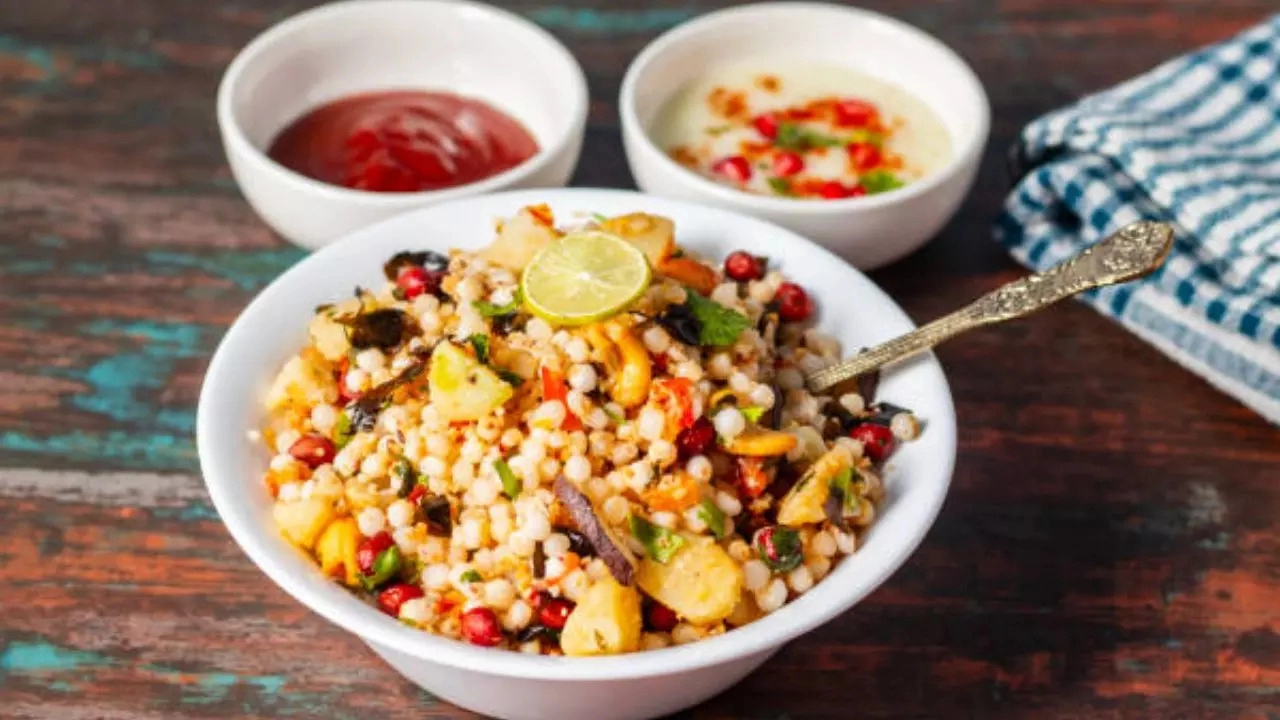Pallavi Mehra • 03 Oct 2024
5 Healthy Alternatives For Sabudana You Should Try This Navratri Fasting

5 Healthy Alternatives For Sabudana You Must Add To Your Diet During Navratri Fasting (Image Credits: iStock)
Navratri is a time of spiritual reflection, fasting, and feasting on traditional foods. One such popular food consumed during the fast is sabudana (tapioca pearls), a common ingredient in dishes like sabudana khichdi and sabudana vada. While sabudana is filling and provides energy, it is predominantly made of starch and lacks significant nutritional value. Hence, many people are seeking healthier alternatives to sabudana to add to their Navratri fasting meals.
Here we have listed five healthy and nutritious alternatives to sabudana that you can incorporate into your Navratri diet:
1. Amaranth (Rajgira)
Amaranth, also known as rajgira, is a gluten-free pseudo-grain that is rich in protein, fibre, and essential minerals like calcium, magnesium, and iron. It provides a good source of energy while offering numerous health benefits that surpass those of sabudana.
Why Choose Amaranth?
- High protein content: Amaranth is an excellent source of plant-based protein, which helps maintain muscle mass and keeps you feeling fuller for longer.
- Rich in fibre: The high fibre content aids in digestion and helps prevent constipation, a common issue during fasting.
- Nutrient-dense: Amaranth is packed with vitamins and minerals, making it a more nutrient-dense option than sabudana.
As per research, amaranth has antioxidant and anti-inflammatory properties. These qualities can support overall health during fasting, particularly in helping to manage inflammation caused by dietary changes.
How to Include Amaranth in Your Diet: You can use amaranth flour to make rotis or boil the seeds to create a porridge-like dish. It can also be used in soups and as a base for energy bars.
2. Buckwheat (Kuttu)
Buckwheat, commonly referred to as kuttu during fasting, is another excellent alternative to sabudana. It is a gluten-free grain that is rich in fibre, protein, and essential nutrients like magnesium and iron. Buckwheat is widely used in fasting recipes, particularly in making rotis and puris.
Why Choose Buckwheat?
- Low glycemic index: Buckwheat has a low glycemic index, which means it releases sugar into the bloodstream slowly, providing sustained energy without causing spikes in blood sugar levels.
- Rich in protein: It contains all eight essential amino acids, making it a complete protein source that supports muscle repair and growth.
- Heart-healthy: Buckwheat is known to improve heart health by reducing cholesterol levels and lowering blood pressure.
Studies reveal that consuming buckwheat regularly can lower cholesterol and improve heart health. This makes it a much healthier alternative to starchy sabudana.
How to Include Buckwheat in Your Diet: Buckwheat flour can be used to make rotis, pancakes, and even fasting-friendly pakoras. Boiled buckwheat can be used as a substitute for sabudana in khichdi.
3. Quinoa
Quinoa is a superfood that has gained popularity worldwide due to its exceptional nutritional profile. It is a gluten-free, protein-rich grain that is ideal for fasting.
Why Choose Quinoa?
- Complete protein: Like buckwheat, quinoa contains all nine essential amino acids, making it a complete protein.
- Rich in fibre: The high fibre content helps with digestion and can aid in weight management during fasting.
- Rich in antioxidants: Quinoa is packed with antioxidants that help reduce oxidative stress in the body, which can be heightened during periods of fasting.
Research suggests that quinoa has anti-inflammatory properties and can help reduce the risk of chronic diseases like heart disease and diabetes.
How to Include Quinoa in Your Diet: Quinoa can be used in salads, porridge, or even as a base for fasting-friendly pilafs and stir-fries.
4. Millets
Millets, such as foxtail millet and barnyard millet, are small-seeded grains that are highly nutritious and gluten-free. They are packed with fibre, vitamins, and minerals and serve as a great alternative to sabudana.
Why Choose Millets?
- Low in calories: Millets are lower in calories than sabudana, making them a perfect choice for those looking to manage their weight during fasting.
- High in fibre: The high fibre content helps in improving digestion and controlling blood sugar levels.
- Rich in antioxidants: Millets are a good source of antioxidants, which help protect the body from harmful free radicals.
How to Include Millets in Your Diet: You can use millet flour to make rotis or boil the grains to make a porridge. They can also be used in fasting-friendly upma or khichdi.
5. Makhana (Fox Nuts)
Makhana, also known as fox nuts or lotus seeds, is a popular fast food that provides numerous health benefits. It is low in calories, rich in antioxidants, and a good source of plant-based protein.
Why Choose Makhana?
- Low in fat: Makhana is a low-fat alternative to sabudana and is ideal for those trying to manage their weight during fasting.
- Rich in antioxidants: It contains flavonoids, which help fight free radicals and reduce inflammation.
- Supports heart health: Makhana has properties that help regulate blood pressure and cholesterol levels.
How to Include Makhana in Your Diet: You can roast makhana and season it with rock salt for a healthy snack, or use it to make kheer and other fasting-friendly dishes.
Get Latest News Live on Times Now along with Breaking News and Top Headlines from Diet, Health and around the world.